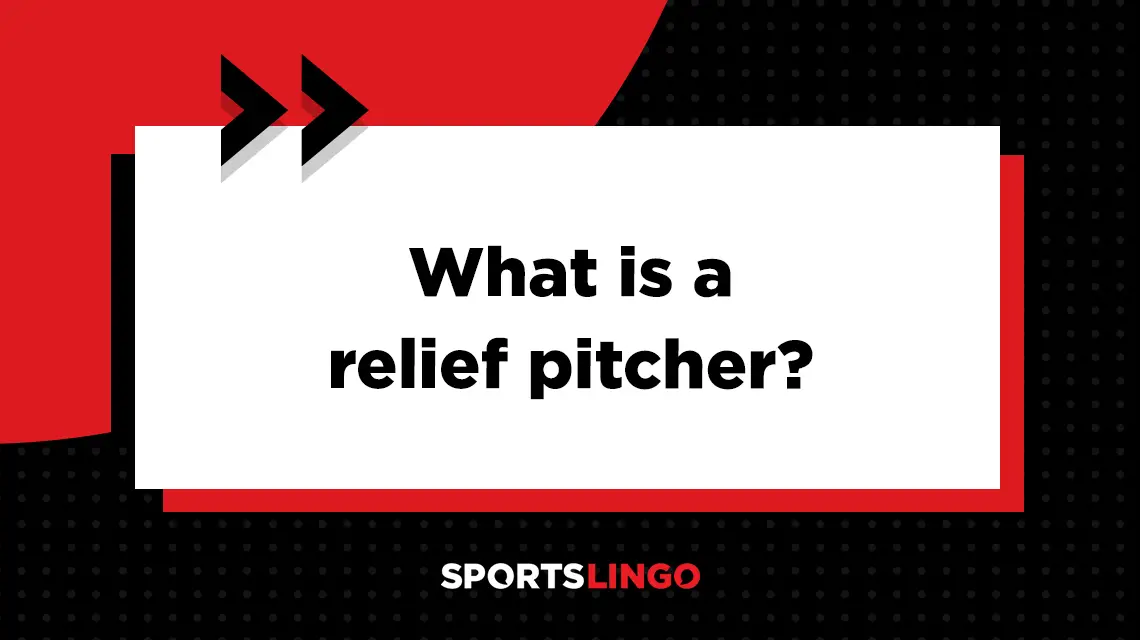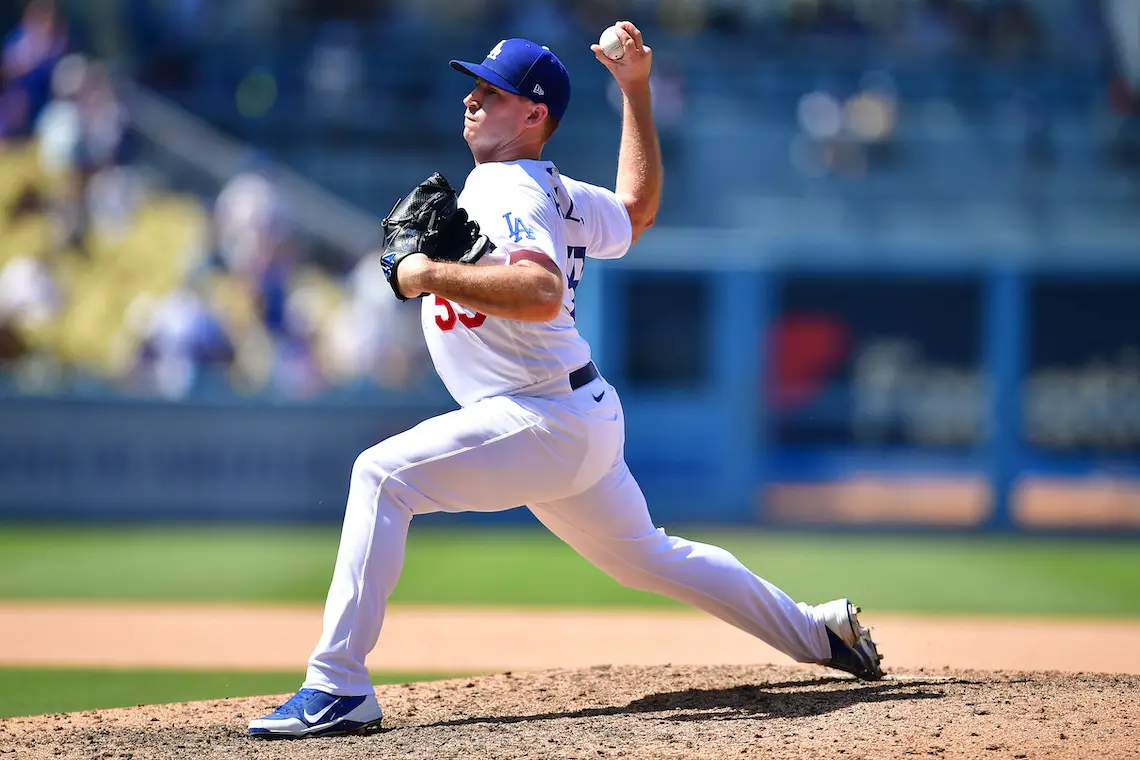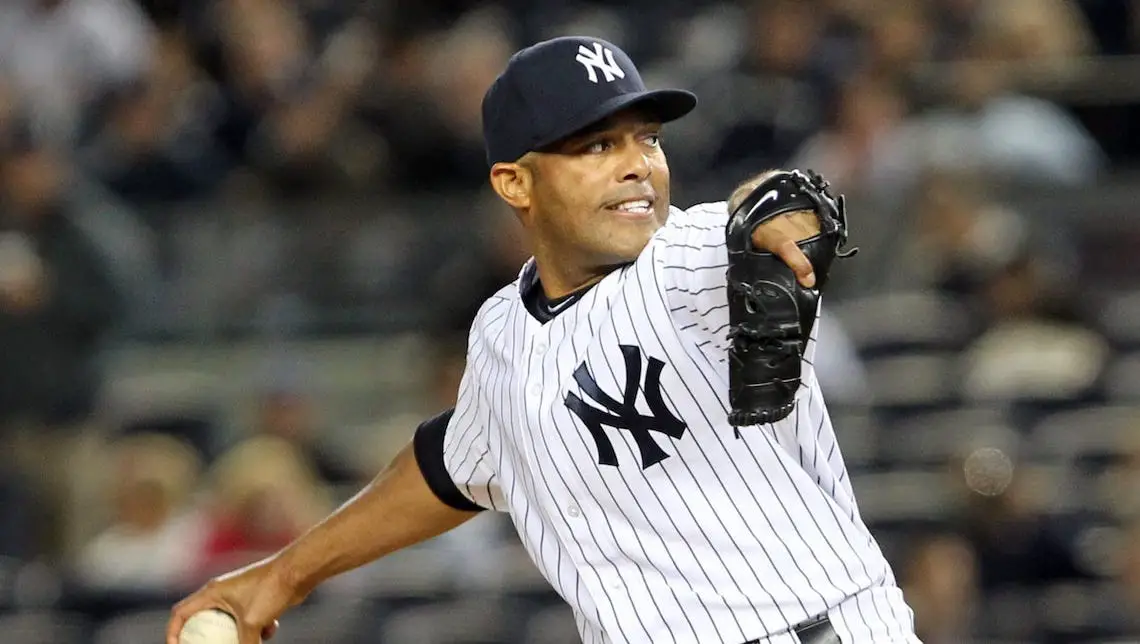
re*lief pitch*er
What is the definition of relief pitcher in baseball?
1. A relief pitcher is a pitcher who enters the game to replace the starting pitcher, usually due to poor performance, fatigue or injury. Relief pitchers may also be used strategically to match up against a specific batter, or they may have a specialty pitch that is favorable, during certain innings of the game.
A team’s roster of relief pitchers is referred to as its bullpen, which is also the name of the area where these pitchers warm up before entering a game.
What does a relief pitcher do in baseball?
A relief pitcher is brought into a baseball game to help stop the opposing team from getting hits and scoring runs. Their goal is to be as effective as possible in the pitching position despite only being in the game for a limited time.
Because they have a fresh arm compared to the outgoing pitcher they are replacing, relief pitchers are expected to throw fast, accurate pitches and hopefully get strikeouts on as many batters as possible.
What are the pros and cons of a relief pitcher?
The biggest pro of a relief pitcher is that they can pitch at maximum effort during their time in the game. While starting pitchers have to reserve their energy to sustain their performance throughout the game, relievers often pitch for just one or two innings. This also reduces the amount of time they need to recover between games.
One drawback of relief pitchers is that they get less playing time compared to starters, so they have less experience in game situations. There’s also more pressure for relievers to perform at a high level during their brief time in the game.
Types of relief pitchers in baseball
There are several different types of relief pitchers that a team may have in their bullpen. Each one has a distinct role on the team, which helps coaches decide which reliever to put in depending on the circumstances of the game.
The main types of relief pitchers in baseball are middle relievers, long relievers, setup men, closers and left-handed one out guys.
Middle reliever
Middle relievers typically only pitch one or two innings at a time. In many cases, these relievers are brought in prior to a closer coming in. They commonly pitch during the 5th, 6th and 7th innings.
Long reliever
A long reliever will typically pitch for three or more innings, and often comes in the earlier innings of the game. These relievers are typically brought in to the game if the starter needs to be pulled earlier than expected. Additionally, long relievers may be used if it appears that the the game is headed into extra innings. Some long relievers are former starting pitchers.
Setup man
A setup man is a type of relief pitcher that is brought in toward the end of a game. Usually, they enter the game in the 7th or 8th inning and help to maintain a lead or tie before the closer is brought in. A skilled setup man may eventually be selected as a closer.
Closer
A closer is a type of reliever who enters the game in the 9th inning when a team has a lead of three runs or less. These players are expected to maintain the lead and secure the win for their team. A closer is usually the team’s best relief pitcher.
Left-handed one out guy
A left-handed one out guy is more commonly referred as a LOOGY. This type of relief pitcher specializes in pitching against left-handed batters. LOOGYs usually come into the game for brief periods of time in order to capitalize on the way left-handed batters typically struggle when facing a left-handed pitcher.

Gary A. Vasquez/USA TODAY Sports
Is it better to be a starting pitcher or relief pitcher?
While both types of pitchers are valuable to their team, the position of starting pitcher is considered to be more desirable than that of a relief pitcher.
What is the difference between a relief and starting pitcher?
A relief pitcher usually only pitches for a brief period during the later innings of a game. Starting pitchers begin pitching in the first inning and usually play for at least 5 innings.
A starting pitcher generally has more impact on the game, the stamina to last through numerous innings and a grasp of many different types of pitches and strategies.
What is the difference between a closing pitcher and a relief pitcher?
A closing pitcher is a type of relief pitcher who comes in at the end of the game, usually in the final inning when their team is ahead. Closers are expected to maintain the lead so they can ensure a win.
How many pitches does a relief pitcher get?
Relief pitchers often throw fewer than 30 pitches in a game. Long relievers, who may throw upwards of 60 pitches per appearance, are the exception since they are trained to throw more pitches when entering a game.
There are no pitch limits for relief pitchers. However, coaches may choose to place limits on how many pitches each reliever gets in order to avoid injury or fatigue.
How long does a relief pitcher have to warm up?
Relief pitchers typically warm up in the bullpen before entering a game. Once they are on the mound, they have a limited amount of time in which they can throw as many warmup pitches as they like. The time allotted for pitching changes in Major League Baseball (MLB) varies based on certain game conditions:
- 2 minutes and 5 seconds for local broadcasts
- 2 minutes and 25 seconds for nationally televised games
- 2 minutes and 55 seconds for tiebreaker and postseason games
The countdown begins as soon as the relief pitcher crosses the warning track. Relief pitchers receive a warning for their final warmup pitch at the 25-second mark, which indicates that they must throw it before the 20-second mark.
Previously, a maximum of eight warmup pitches were granted during pitching changes. However, the rule was updated in the 2018 season to allow unlimited warmup pitches within certain time constraints.
Can you bring in a relief pitcher in the middle of an at-bat?
Relief pitchers are permitted to be brought in for a pitching change in the middle of an at-bat. Although it is relatively rare for a reliever to enter the game during an at-bat, it is legal. The official MLB rulebook states that “A player, or players, may be substituted during a game at any time the ball is dead.”
Can relief pitchers come back in?
Relief pitchers may not re-enter the game once they have been replaced with a pitching change. Once a player is removed, they can not come back into the game.
What is the three-batter minimum?
According to the three-batter minimum rule, any pitcher who enters a game must face a minimum of three batters in an appearance or pitch to the end of a half-inning. Exceptions are made for injury and illness.
If a reliever pitches to one batter to end an inning, they can be removed from the game. However, if the reliever is brought back in for the subsequent inning, they must pitch to at least two more batters to meet the three-batter minimum.
This rule, which went into effect for the 2020 season, was added to reduce the number of pitching changes and help limit the average length of MLB games.
Can a relief pitcher get a win?
A relief pitcher is credited with a win if one of the following scenarios occurs:
- They are pitching when their team takes the lead and keeps it for the rest of the game.
- The starting pitcher pitched fewer than five innings in what would’ve otherwise been a starter’s win.
When a reliever is credited with a victory, it is recorded statistically as a relief win (RW).
Can a relief pitcher get a no-hitter?
A relief pitcher can contribute to a combined no-hitter, which occurs when two more more pitchers play in a game with no recorded hits. A reliever cannot, however, get a traditional no-hitter on their own since this requires pitching for a full nine innings.
As of the 2022 season, there have been 19 combined no-hitters in MLB history. The record for the most pitchers contributing to a combined no-hitter was set by the Houston Astros. They had a total of six pitchers play in a shutout game against the New York Yankees on June 11, 2003.
Who were the best relief pitchers in MLB history?
Some of the best relief pitchers in MLB history include:
Rollie Fingers
Rollie Fingers played for the Oakland Athletics (OAK), San Diego Padres (SD) and Milwaukee Brewers (MIL) during his career. He was a seven-time All-Star and three-time World Series champion and boasted a career ERA of 2.90. Fingers was instrumental in expanding the role of relief pitchers in the MLB. He helped popularize the use of closers as a permanent role on the team and bringing in relievers more frequently in games.
Goose Gossage
Rich “Goose” Gossage played for nine different teams over 22 seasons, including the Chicago White Sox (CHW), Pittsburgh Pirates (PIT), New York Yankees (NYY), San Diego Padres (SD) and Seattle Mariners (SEA). He was one of the best closers in the league, and he recorded the final out to win a division, league or World Series title a total of seven times. Gossage was a nine-time All-Star and three-time American League (AL) saves leader.
Dennis Eckersley
Dennis Eckersley primarily played for the Boston Red Sox (BOS) and Oakland Athletics (OAK) over more than two decades in the MLB. Although he initially played as a starter, he later became one of the best closers in the league and was known for his backdoor slider and sinking fastball. In 1992, he was selected as the Most Valuable Player in the American League, won the Cy Young Award and was the league leader in saves.
Trevor Hoffman
Trevor Hoffman spent most of his career with the San Diego Padres (SD), but he also played for the Florida Marlins (FLA) and Milwaukee Brewers (MIL). Though he initially played as a shortstop in college, he was converted to a pitcher and developed a powerful fastball. He was an effective closer who was the first in the league to reach 500 and then 600 saves. Hoffman was selected as an All-Star seven times and was the National League (NL) save leader in 1998 and 2006. The National League’s Reliever of the Year Award is named in his honor.
Mariano Rivera
During the 19 seasons he played for the New York Yankees (NYY), Mariano Rivera was briefly a starting pitcher before switching to setup man, and he eventually became the Yankee’s go-to closer and was known for his cut fastball. This 13-time All-Star and five-time World Series champion is credited with 652 saves and 952 games finished, both of which set new MLB records. He also holds the postseason record for the lowest earned run average (ERA) of 0.70. The American League’s Reliever of the Year Award is named in his honor.

USA TODAY Sports
Other notable relief pitchers
Some other relief pitchers with remarkable MLB careers include:
- Hoyt Wilhelm: Cleveland Indians (CLE), Baltimore Orioles (BAL), Los Angeles Dodgers (LAD) and others
- John Franco: Cincinnati Red (CIN), New York Mets (NYM), Houston Astros (HOU)
- Bruce Sutter: Chicago Cubs (CHC), St. Louis Cardinals (STL), Atlanta Braves (ATL)
- Billy Wagner: Houston Astros (HOU), Philadelphia Phillies (PHI) and others
- Joe Nathan: San Francisco Giants (SF), Minnesota Twins (MIN) and others
Who are the top relievers in the MLB right now?
According to the standings for the 2023 season, the following are some of the top MLB relief pitchers:
- Evan Phillips
- Edwin Díaz
- Camilo Doval
- Bryan Abreu
- Jhoan Duran
- A.J. Minter
- David Bednar
- Felix Bautista
- Raisel Iglesias
- Liam Hendriks
- Ryan Pressly
- Andres Munoz
- Josh Hader
- Ryan Helsley
- Jordan Romano
- Devin Williams
- Emmanuel Clase
- Kenley Jansen
- Jorge Lopez
- Daniel Bard
- Scott Barlow
- Jose Leclerc
Major League Baseball Reliever of the Year Award winners
First awarded in 2014, the Reliever of the Year Award honors the best relief pitchers in the National and American Leagues. The awards are named for two notable relievers in recent MLB history: Trevor Hoffman and Mariano Rivera.
As of the 2022 season, the winners of the Reliever of the Year Award include:
Trevor Hoffman NL Reliever of the Year
- 2014: Greg Holland — Kansas City Royals
- 2015: Andrew Miller — New York Yankees
- 2016: Zack Britton — Baltimore Orioles
- 2017: Craig Kimbrel — Boston Red Sox
- 2018: Edwin Díaz — Seattle Mariners
- 2019: Aroldis Chapman — New York Yankees
- 2020: Liam Hendriks — Oakland Athletics
- 2021: Liam Hendriks — Chicago White Sox
- 2022: Edwin Díaz — New York Mets
Mariano Rivera AL Reliever of the Year
- 2014: Greg Holland — Kansas City Royals
- 2015: Andrew Miller — New York Yankees
- 2016: Zack Britton — Baltimore Orioles
- 2017: Craig Kimbrel — Boston Red Sox
- 2018: Edwin Díaz — Seattle Mariners
- 2019: Aroldis Chapman — New York Yankees
- 2020: Liam Hendriks — Oakland Athletics
- 2021: Liam Hendriks — Chicago White Sox
- 2022: Emmanuel Clase — Cleveland Guardians
What makes a good relief pitcher in MLB rankings?
Some of the statistics used to evaluate MLB relievers include:
- Earned run average (ERA)
- Walks plus hits per inning pitched (WHIP)
- Walks (BB)
- Strikeouts (SO)
- Innings pitched (IP)
How much do relief pitchers make?
As of the 2023 season, the top relief pitchers in the MLB generally earned a salary of $10 million or more.
What is a relief pitcher’s average salary?
The average salary for a relief pitcher is around $2.3 million. That’s about one-third of the average salary for starting pitchers, which is nearly $7 million.
Example of how relief pitcher is used in commentary
1. That looks to be the end of the night for Freeland, as the skipper has opted to bring in the relief pitcher for the bottom half of the seventh inning of the Rockies’ matchup against the Blue Jays.
Sports the term is used
1. Baseball
2. Softball
Also seen as:
1. Reliever